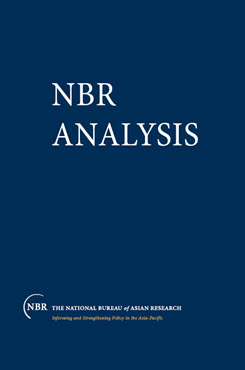NBR Analysis vol. 4, no. 2
Regional Issues in Southeast Asian Security
Scenarios and Regimes
Within Southeast Asia one can find many of the forces that have surfaced elsewhere as vexing security problems in the post-Cold War era: ethnic and religious differences, asymmetries of national wealth, and conflicting territorial claims. Yet the region as a whole has enjoyed remarkable stability and economic success even as the last vestiges of Soviet-American competition have receded.
Partly because of its success, and the success of nearby powers, the region is presenting new strategic challenges. To assist Americans in understanding these challenges NBR is pleased to present a study by two leading Southeast Asia specialists, Donald Emmerson and Sheldon Simon. The study is divided into complementary parts, the first providing both basic evidence and argument in a self-standing essay, and the second exploring themes and scenarios. For ease of reference, both parts have the same topic headings.
In Part One, professor Simon discusses the major security issues in the region, including the dispute over the Spratly Islands in the South China Sea. He notes how the ASEAN states have taken steps at security collaboration on a variety of issues while also modernizing their respective military forces. According to Professor Simon, modernization and multilateral security cooperation will be attractive to ASEAN in the future. Driving these developments in part is China’s air and naval buildup, which is being used to support South China Sea claims and which will continue to test efforts to establish post-Cold War security arrangements in the region.
In Part Two Professor Emmerson addresses the themes in Professor Simon’s analysis and provocatively explores their implications. He offers four ideal types of security regimes for Southeast Asia based on either balance among states internal or external to the region or the hegemony of one. Whether the future security regime will include all Southeast Asian states or a sub-regional core of states, Emmerson shows the significance of outside powers in the post-Cold War era, particularly the United States.


